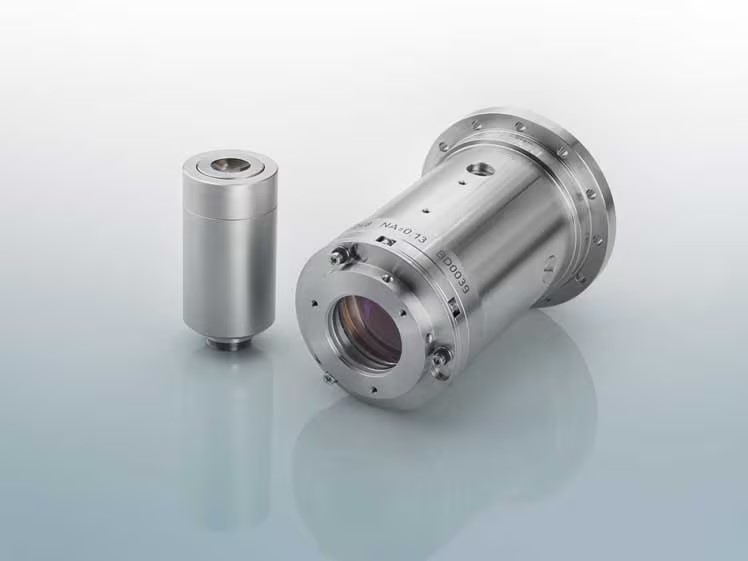Synthetic Sapphire usage in Semiconductor Applications
If you want to learn more, you’re in the right place.
Overview
This paper explains the capability of synthetic sapphire in semiconductor application spaces. Additionally, we will explore the manufacturing and assembly orientation utilizing synthetic sapphire material, and touch on defects that can adversely affect material performance in applications that use sapphire as sealing surfaces. Typical uses for these components require deliberate design choices and tightly toleranced product for fail safe applications.
Understanding Synthetic Sapphire
Synthetic sapphire is a robust, versatile material that can withstand harsh conditions and is suitable for a wide variety of applications. Since synthetic sapphire is an aluminum oxide material grown in hexagonal crystalline form, it is hard and has a high resistance to heat and extreme chemistries. Due to its crystalline structure, material and optical characteristics can change depending on the orientation of the crystallographic planes to the designer’s placement. The material can be milled, drilled, cut, lapped, and polished into many sizes, shapes, and surface finishes while maintaining lattice orientation thorough out the material processing stages. These finished pieces can be used in aggressive environments where reliability, optical transmission properties and hardness are required.
The semiconductor industry continually seeks materials with exceptional properties to enhance the performance and reliability of electronic devices. Synthetic sapphire, a high-performance engineered material, has gained significant attention due to its unique combination of properties that make it suitable for various applications in the semiconductor industry. This paper provides an in-depth analysis of synthetic sapphire and its exceptional characteristics, examines its utilization in semiconductor manufacturing processes, explores its applications in different semiconductor devices, and discusses the future prospects of synthetic sapphire in this industry.
Introduction
The semiconductor industry is characterized by constant innovation and the need for materials with superior properties. Synthetic sapphire, a single-crystal form of aluminum oxide (Al2O3), has emerged as a promising material due to its remarkable characteristics, including high thermal conductivity, excellent electrical insulation, exceptional hardness, and superior optical transparency. This paper aims to explore the applications of synthetic sapphire in the semiconductor industry, highlighting its versatility and potential to address the industry’s evolving needs.
Synthetic sapphire, with its exceptional properties, finds various applications in the semiconductor industry. Here are some of the key uses of synthetic sapphire in this industry:
Epitaxy Substrates:
- Epitaxy is a crucial process in semiconductor manufacturing, where thin layers of crystalline materials are deposited on a substrate to create integrated circuits. Synthetic sapphire is used as a substrate in epitaxial growth processes, providing a high-quality crystalline surface for the deposition of semiconductor layers. Sapphire’s excellent thermal conductivity and stability at high temperatures make it ideal for this application.
Wafer Carriers and Susceptors:
- During high-temperature processes such as annealing, sintering, and diffusion, synthetic sapphire is used as wafer carriers and susceptors. Sapphire’s ability to withstand extreme temperatures and maintain its mechanical and dimensional stability ensures the proper handling and uniform heating of semiconductor wafers.
Insulating Substrates:
- Synthetic sapphire is employed as an insulating substrate in various semiconductor devices, including power electronics and high-frequency applications. Sapphire’s high electrical resistance and excellent thermal conductivity make it an ideal choice for isolating components, reducing heat generation, and optimizing electrical performance.
High-Temperature Applications:
- The semiconductor industry often requires materials that can withstand high temperatures in specific applications. Synthetic sapphire, with its high melting point (approximately 2040°C), is used in environments where other materials would degrade. It finds applications in heat shields, chambers, and windows for high-temperature processes such as plasma etching, ion implantation, and rapid thermal processing.
Optical Windows and Components:
- Sapphire’s exceptional optical properties, such as high transparency in the visible to near-infrared spectrum, make it valuable for optical applications in the semiconductor industry. Synthetic sapphire is used as windows, lenses, and prisms in optical systems, lasers, and imaging devices. Its high hardness and scratch resistance ensure durability and longevity in harsh environments. Figure #1 is an example of a high performance objective lens that would be used in the micromachining and marking process in the manufacture of semiconductor chips. This type of lens would utilize synthetic sapphire windows for the precision, robustness and optical properties.

Figure 1: High Performance Objective Lens
Photovoltaics:
- Synthetic sapphire plays a role in photovoltaic (solar cell) technology. It serves as a substrate for the growth of gallium nitride (GaN) layers in high-efficiency solar cells. Sapphire’s excellent lattice matching with GaN and its transparent nature enable the efficient capture and transmission of light in photovoltaic devices.
Conclusion / Summary
Overall, synthetic sapphire’s exceptional properties, including high thermal conductivity, electrical insulation, optical transparency, mechanical strength, and chemical stability, make it a valuable material in the semiconductor industry. Its use in epitaxy, wafer carriers, insulating substrates, high-temperature applications, optical components, and photovoltaics contributes to improved performance, reliability, and efficiency in various semiconductor devices and processes.
